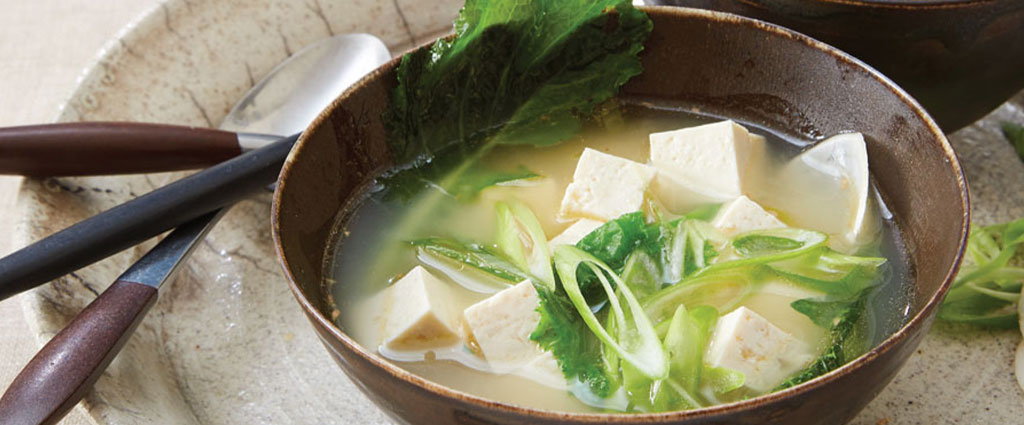Cooking with Ginger: Benefits and How-To
This versatile ingredient is great in recipes, from savory to sweet.
Cooking with Ginger: Benefits and How-To
This versatile ingredient is great in recipes, from savory to sweet.
What is it?
Ginger is grown on a flowering plant. However, the roots, which are called rhizomes, are what is harvested for their health benefits and seen on the shelf at the grocery store. Ginger plants grow in warm, humid climates and are native to parts of Asia. Ginger is a part of the Zingiberaceae family, which also includes turmeric and cardamom. A ginger plant is best harvested after 8 to 10 months of growing.
RECIPES USING GINGER
What are its potential health benefits?
There have been many studies on the health effects of ginger:
- Consuming 1 gram of fresh ginger root per day for four days was found to significantly decrease nausea and vomiting in pregnant women with no risk for the baby.
- Ginger may help with dysmenorrhea (severe and frequent menstrual cramps). One review found that ginger reduced menstrual pain and cramps to the same degree as non-steroidal anti-inflammatory drugs. Another study showed a reduction in pain when 500 mg ginger root capsules were taken three times per day for five days beginning two days before onset of a period.
- Consuming ginger root capsules (1,500 mg) per day for 12 weeks showed a decrease in rheumatoid arthritis symptoms.
- Ginger may have positive effects on the immune system and inflammation.
Remember to consult with your healthcare provider before incorporating supplements into your eating pattern.
Try Ginger
Ginger is a plant with green-purple flowers and a fragrant underground rhizome. It is commonly used in cooking, as well as soaps and cosmetics.
How do you cook with it?
To cook with mature ginger root—most commonly found in Kroger stores—you’ll need to peel the skin. Once it is peeled, you can chop, mince, slice, julienne or grate it, depending on what you plan to add it in. With its slightly peppery and sweet flavor, it’s most popular in Asian dishes like stir-fries, marinades, noodle bowls or alongside sushi. Ginger can also be added into beverages such as sparkling water, tea, smoothies, juices or wellness shots. In addition, ground ginger is often incorporated into baked goods or roasted vegetables.
A few tips and tricks
1. When purchasing fresh ginger, look for firm, moist roots that feel heavy for their size.
2. Ginger will be okay on your kitchen counter for a few days, but if you want to store it longer, wrap it in paper towels and then in plastic and keep it in your refrigerator’s crisper.
3. Ginger can be frozen if tightly wrapped in plastic. Many people peel and mince their ginger first before freezing it, for added convenience.
4. Fresh ginger doesn’t always have to be peeled, even though you will encounter this instruction in most recipes. If the ginger is young and the skin is very fine and clings to the root, or if it is going to be finely chopped and mixed in with many other things, you can skip the peeling step.
5. The microplane is an excellent tool if you want superfine, even pureed, ginger.
What is it?
Ginger is grown on a flowering plant. However, the roots, which are called rhizomes, are what is harvested for their health benefits and seen on the shelf at the grocery store. Ginger plants grow in warm, humid climates and are native to parts of Asia. Ginger is a part of the Zingiberaceae family, which also includes turmeric and cardamom. A ginger plant is best harvested after 8 to 10 months of growing.
RECIPES USING TURMERIC
What are its potential health benefits?
There have been many studies on the health effects of ginger:
- Consuming 1 gram of fresh ginger root per day for four days was found to significantly decrease nausea and vomiting in pregnant women with no risk for the baby.
- Ginger may help with dysmenorrhea (severe and frequent menstrual cramps). One review found that ginger reduced menstrual pain and cramps to the same degree as non-steroidal anti-inflammatory drugs. Another study showed a reduction in pain when 500 mg ginger root capsules were taken three times per day for five days beginning two days before onset of a period.
- Consuming ginger root capsules (1,500 mg) per day for 12 weeks showed a decrease in rheumatoid arthritis symptoms.
- Ginger may have positive effects on the immune system and inflammation.
Remember to consult with your healthcare provider before incorporating supplements into your eating pattern.
Try Ginger
Ginger is a plant with green-purple flowers and a fragrant underground rhizome. It is commonly used in cooking, as well as soaps and cosmetics.
How do you cook with it?
To cook with mature ginger root—most commonly found in Kroger stores—you’ll need to peel the skin. Once it is peeled, you can chop, mince, slice, julienne or grate it, depending on what you plan to add it in. With its slightly peppery and sweet flavor, it’s most popular in Asian dishes like stir-fries, marinades, noodle bowls or alongside sushi. Ginger can also be added into beverages such as sparkling water, tea, smoothies, juices or wellness shots. In addition, ground ginger is often incorporated into baked goods or roasted vegetables.
A few tips and tricks:
1. When purchasing fresh ginger, look for firm, moist roots that feel heavy for their size.
2. Ginger will be okay on your kitchen counter for a few days, but if you want to store it longer, wrap it in paper towels and then in plastic and keep it in your refrigerator’s crisper.
3. Ginger can be frozen if tightly wrapped in plastic. Many people peel and mince their ginger first before freezing it, for added convenience.
4. Fresh ginger doesn’t always have to be peeled, even though you will encounter this instruction in most recipes. If the ginger is young and the skin is very fine and clings to the root, or if it is going to be finely chopped and mixed in with many other things, you can skip the peeling step.
5. The microplane is an excellent tool if you want superfine, even pureed, ginger.
ABOUT THE AUTHOR
Anna Smith (MS, RDN, LD) is a positive, motivating dietitian who’s ready to help you prioritize your health. Through tasty recipes, budget-friendly food products and time-saving hacks, Anna will work to help you find a personalized nutrition solution. Outside of work, Anna loves cooking Mediterranean cuisine (thanks to her precious Lebanese grandparents), listening to audiobooks and snuggling her baby.
Did you know? You can meet virtually with a Kroger dietitian to help you achieve your personal wellness nutrition goals. Learn more about Telenutrition.
ABOUT THE AUTHOR
Anna Smith (MS, RDN, LD) is a positive, motivating dietitian who’s ready to help you prioritize your health. Through tasty recipes, budget-friendly food products and time-saving hacks, Anna will work to help you find a personalized nutrition solution. Outside of work, Anna loves cooking Mediterranean cuisine (thanks to her precious Lebanese grandparents), listening to audiobooks and snuggling her baby.
Did you know? You can meet virtually with a Kroger dietitian to help you achieve your personal wellness nutrition goals. Learn more about Telenutrition.







Share this Post